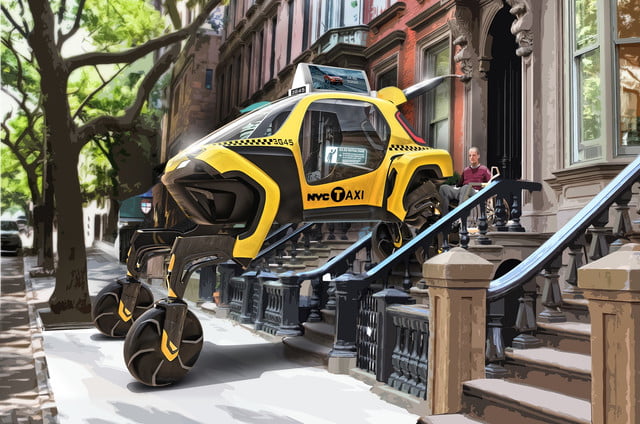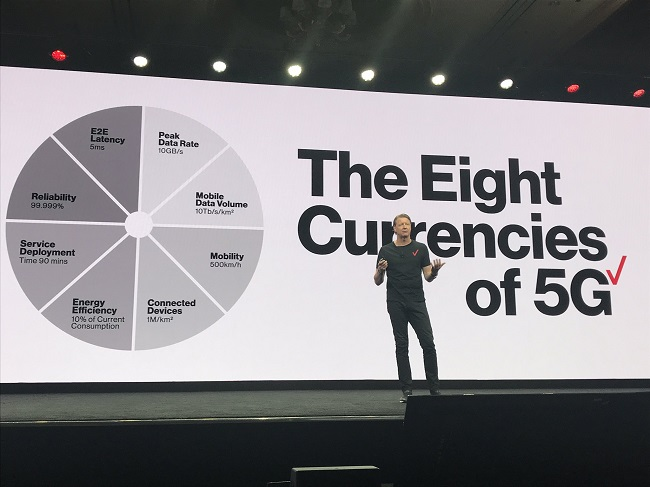In early January, I got the chance to attend CES Las Vegas for the very first time. I joined the VC Aster only a few months ago after several years in consulting, and this was an amazing opportunity to get my hands dirty at the world’s hottest tech innovation event.

As you can expect, everything there was huge, there were a tremendous number of startups to meet, events to attend, conferences to join, corporate booths to visit… And funny enough, I felt like large companies have switched places with startups. If you wanted to be inspired and get a taste of what the world could look like in the distant future, then the corporate halls were the place to be. During CES, corporates deploy significant efforts to prove they are innovation leaders in their fields, sometimes at the expense of common sense. On the other hand, startups have a more pragmatic approach (at least the ones I met with). They need to reach markets in the next few years to survive so they are working on more medium-term innovations. Reconciling both parties around common interests is the biggest challenge of all!
As mobility is one of Aster’s core focuses and was heavily show-cased at CES, I spent a lot of time in the LVCC North Hall, which was dedicated to vehicle technology. After driving into the future, I decided to walk back to the startup world at Eureka Park, and I took the chance to wonder: in the era of autonomous driving, what will be the new relationship between riders and their cars? How will new mobility use cases be enabled by 5G? How can cities prepare today for what is coming tomorrow?
The travel experience will change drastically, but a car will stay a car
Two major trends impressed me regarding the travel experience: the “tailored travel experience” and the “augmented travel experience”.
Many car manufacturers and OEMs (Faurecia, Valeo, Honda, Kia) are working on the “tailored travel experience”: when riders enter a car, their physiological and psychological states are assessed (cardiac frequency, skin temperature, clothes, mood/expression, sweat, etc.). The travel experience is customized to best fit this state: light, temperature, sounds/music, odors, itinerary, seat tilt, etc. OEMs and car manufacturers study the human body to better design car parts in order to meet the highest level of comfort. Faurecia is working with ESP Consulting on this topic. This trend started to appear at CES last year but now everyone is working on it.
Regarding the “tailored travel experience”, it seems technology has passed the stage where it was merely relieving people of hard and troublesome chores or providing tools to help/accelerate a decision process. Now technology aims to take the decision in place of people, completely removing the need for a human action. The main goal is to make people “happy and comfortable” … and helpless some might say. This reminded me of a scene at the beginning of Wall-E movie.

A few players explored more precise use cases to offer an “augmented travel experience”. For example, Nissan goes further than just displaying basic navigation information on the car windshield. They are working on a 3D interface connecting the real and the virtual world, i.e., the new windshield, called “invisible to visible”. Using data collected from previous drives, the screen can adapt and change to a sunny blue sky if the weather is cloudy/foggy and rainy to increase visibility. On difficult roads (eg mountains) where the driver takes control, it also gives augmented content like a virtual car ahead, allowing the driver to anticipate the right path to take. If needed, a human assistant can also be projected on the seat next to the driver. This also finds applications in driving lessons. Finally, to find a parking spot, the driver can see through whole buildings and check streets nearby.
Another example came from the Valeo R&D department, which is working on the “augmented phone call experience”. In that case, the “driver” can see the interlocutor as a hologram seated in the back of the car (and hear him as if the voice came from the back of the car). On the other side, the interlocutor can wear VR glasses to talk as if he was indeed on the back seat. Value proposition is quite unclear at that stage, but CES is all about demonstrating new stuff!
All these innovations easily make us forget one thing… even though vehicle software evolves incrementally each year, the vehicle hardware (shape and bodywork at least) in itself does not change so much. Basically, it is still a box on 4 wheels. And yet, there surely is a lot to do to improve maneuverability, parking, traffic, etc. Hyundai is the only one to imagine a “walking car”, which can activate robotic legs to walk at 5km/h over rough terrain and a variety of obstacles. It might be outlandish and unbuildable, but at least Hyundai is thinking “beyond the range of wheels”. Not to mention all flying vehicles, with Bell’s hydrid-electric flying taxi, available via Uber by the mid-2020s. I choose to sort them into “small personal aircrafts” rather than “flying cars”.

In a short-term view, a lot has yet to be done to turn regular cars into connected cars, starting with a new telecom network made available for all vehicles. All vehicles presented at CES 2019 seemed to be connected and autonomous by default! A gap needs to be bridged by all players of the mobility ecosystem.
5G is not far away from enabling connected cars and autonomous driving
Even beyond use cases in mobility, 5G was a major theme at CES 2019, advertised both during the CES conference launch and throughout the whole show on the center stage. Verizon, the first US telco operator involved in 5G, spoke in many conferences and for them, words were not enough to describe the tremendous opportunity of 5G: “the next generation wireless network will be a quantumly wireless and speed connectivity for users”, “ 5G will only be limited by our imagination”, etc. 5G will indeed bring a high speed (until 20 Gbit versus maximum 1 Gbit for 4G and Wifi), high density (1m connected devices /km2 versus 2000/km² for 4G), high security and reliability, low latency (1ms versus at least 100ms for 4G) and low power (10% of current consumption) connectivity to many use cases, including some that are not currently using wireless connectivity.

As a matter of fact, connected cars will be among the first use cases for 5G. For instance, better connectivity on board (in cars, trains, subway, etc.) will enable enhanced infotainment (being able to download a movie in a moving car in a few seconds), parking and navigation services. Augmented and virtual reality applications will be infinite, and players are only beginning to explore the possibilities in the mobility area. Traffic management and safety will be improved, with better communication between vehicles and infrastructure. Verizon reminded that the lag time of the human eye is 150ms to see an obstacle, whereas the information would be transmitted in 1ms with 5G — for a car running at 100km/h, it means a distance of 1.5m VS 2.5cm.
A bit later down the road, 5G will enable autonomous driving, allowing more people to have access to mobility services: people who don’t like driving, the disabled and the elderly, etc. Non-driving tasks will be covered as well: hailing a self-driving taxi, monitoring a self-driving fleet, supporting riders through their journey. The first autonomous vehicles such as Waymo’s did not wait for 5G and are already on the road, for training and educating purposes. Indeed, explaining autonomous driving to the wider public will help legislators pass new bills.
However, in the short-term, first usage scenarios for 5G need to be targeted in a local approach in order to avoid waiting for a broad deployment. For example, a 5G enabled parking garage, a 5G enabled campus, with autonomous vehicle onsite only, or a 5G travelling corridor, alongside highways or subway routes. 2019 will see the first outcomes but 5G will still take years of worldwide effort to come into full effect.
Indeed, 5G is coming for the autonomous vehicle, but several challenges remain: the whole ecosystem is still waiting for frequency bands to be allocated, not just in the US but across the world. The right algorithms need to be developed and tested for different scenarios. Technological and regulatory challenges remain to densify networks and not allow dead notes (higher frequency means less coverage). Last but not least, investment from public authorities is necessary to upgrade the city infrastructure.
Still, a lot has yet to be done to prepare cities for new mobility solutions
Having a limited knowledge of what the mobility landscape will look like, cities are worried about the investment and regulatory decisions they may need to make for the 10 years to come. As a matter of fact, there are critical and pressing issues, since autonomous driving is already reaching the road. For example, Waymo autonomous ride-hailing services was launched in December 2018, but only as a demonstration since public authorities don’t have the policy framework for this yet.
The mayor of Baltimore took part in a panel discussion at the conference called “What’s next for transportation in the Smart City?”. She repeatedly asked about how to prepare Baltimore for autonomous vehicles and how to ensure access to public transportation for all citizens, regardless of their age, social status and neighborhood (what about narrow streets? Historical centers?). Her current challenges are the following: building bike lanes in the city (impact on elderly, street access for emergency services, regulation regarding helmet usage, other vehicle access to the bike lanes such as scooters, wheelchairs, etc.), electrifying public transport (impact on the grid), ensuring safety of the citizens without invading people’s lives (every vehicle could be a surveillance camera), and upgrading city infrastructure (including decaying roads) to install new technologies. These challenges all seem quite basic compared to the future of mobility showcased at CES. The need to upgrade our cities was far less in the spotlight than the need to have a stress-free and decision-free travel experience… And yet, these are real issues that will significantly slow down the deployment of connected and autonomous vehicles. Thankfully, some companies address part of the problem, such as the French startup Citymagine, which provides an automated infrastructure inspection in order to secure infrastructures and speed up the arrival of autonomous vehicles in our cities.
At Aster, we are keen on funding companies that will transform the travel experience and enable connected and autonomous driving. That is why we recently invested in Wluper, which is developing a conversational AI to provide navigational intelligence to mobility service providers. However, upgrading cities in a sustainable way, while simultaneously keeping economic, social and environmental challenges in mind is another one of our priorities.
